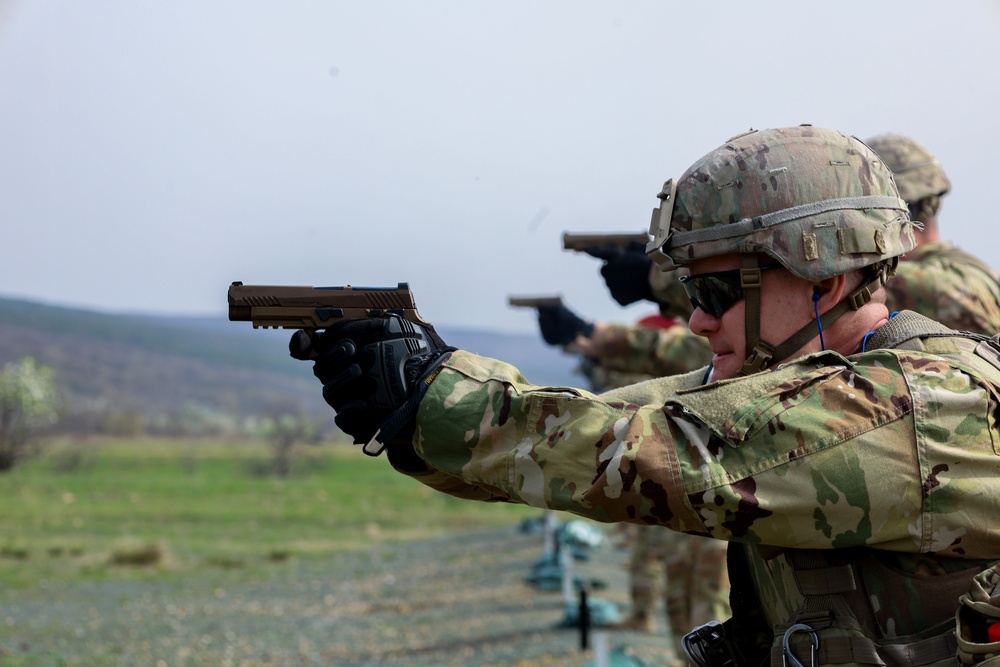SREM-1 – The British experimental sniper rifle
- By Travis Pike
Share This Article

I’ve always had a fascination with the weaponry created during WWII for early special operations and intelligence troops. Most of my focus has been on the American armaments, but recently the weapons of the British SOE have captured my attention. One of the most fascinating is the SREM-1. SREM stands for Sniper Rifle Experimental Model 1.
This is easily one of the most fascinating rifles I’ve ever seen. Fascinating doesn’t necessarily mean good, but the SREM-1 never got a huge chance to try and succeed. What makes the rifle so fascinating? Wood-stocked bullpup rifles are always fabulous, and the SREM hit that market. The weird mix of futuristic concepts paired with old-world wood makes for an interesting dynamic.
That’s cool, but it’s not the first rifle to combine wood and bullpup. What’s interesting is that it’s a pump-action rifle, which is odd for all sorts of reasons but not novel by any means. What is novel is the pump-action device. The SREM-1 uses the rear pistol grip as the pump action. You get a rather fascinating and unique design when you put this all together.
The origins of the SREM-1
The SREM-1 was never a weapon mass issued or even issued within the SOE’s special personnel. The poor rifle never made it beyond the prototyping phase. Only two SREM-1 rifles were ever produced, and to this day, only one survives. It’s in the Royal Armouries Museum, and sadly, their page online doesn’t feature any high-definition gun photos.
The Czech Design team at Royal Small Arms Factory – Enfield developed the weapon. During World War 2, the Brits had several groups from different nations working together to develop weaponry to fight the Nazis. The Brits respected Czech designs as they had already adopted the Bren gun years before.

The design idea came from complaints from British snipers in the field. Needing to manipulate their bolt was giving away their position! How I’m not sure exactly. I would think the sound of the shot would give their position away more than the minimum movement necessary to cycle the bolt.
A natural replacement would be a self-loading rifle, but that requires much more time and engineering to accomplish, especially in 1944, with British resources stretched thin.
The Czech team devised the unique idea to develop a pump-action bullpup rifle. Instead of a forward pump like most pump actions, the pistol grip would activate the action. A forward pump would require a fair bit of movement, and due to the bullpup design, the pump stroke would be longer than necessary. Moving it to the pistol grip made a lot of sense.
Additionally, the action and sight picture would theoretically only experience minimal disturbance as the weapon cycled due to the pump-action design.
Related: The most bizarre military shotgun ammo ever
Inside the SREM-1
First, in the few photos we have of the SREM-1, the most eye-catching thing, which is saying a lot, is the dual triggers. Why would a rifle have double triggers? One released the pistol grip to allow it to act as the pump-action device.
The shooter would pull the extra trigger and pull the pistol grip rearward, which would eject any cartridges or casings from the chamber. Then the shooter would push the pistol grip forward, picking up the next cartridge from the internal five-round magazine.

The rifle was designed for snipers and precision shooting, as long as that sniper was right-handed. While the pistol grip pump action was ambidextrous, the stock and optic’s placement was not. The SREM-1 stock featured a nice, comfy cheekpiece for getting a good sight picture. The optic is mounted to the left side of the gun for use, with the right eye sitting on the cheek pad.
The round ejected out of the top of the gun, and the optic needed to give the ejection port easy clearance.
The SREM-1 fired with the 7.92 Mauser round. In World War 2, the main cartridge of British forces was the .303. However, the 7.92 offered much punch and a better range. The brits did use the round for some medium machine guns, and it made a lot of sense as a sniper rifle.
Related: Force Recon gets a new rifle (and handgun)
Why didn’t it succeed?
There could have been any number of reasons. Development started in 1944, and the European campaign ended in the first half of 1945. Not a ton of time for a niche sniper rifle. At the end of the war rebuilding the country was a higher priority than making a new sniper rifle.

Second, the idea that spurned the design was somewhat silly. The Enfield probably had the best action for making a sniper rifle at the time. It had a short bolt throw for the era and a 60-degree bolt rotation, so optics were easy. Manipulating the bolt required minimal movement, and it leaves me wondering how true this was and if it really was why this gun was produced.
The SREM-1 is a neat idea and indeed novel. Sadly with only one existing, it’s impossible to know if it would have been a reliable and accurate choice. It certainly had style, though.
(Feature Image: Gamespot)
Read more from Sandboxx News
- What is a carry handle and why do rifles have them?
- The story behind this all-gold F-16 – and 5 more new combat plane paint jobs you need to see
- Letters to Loretta: An American B-17 bomber versus Nazi fighters
- This is why France chose the Benelli SuperNova as its new shotgun
- The General Purpose Machine Gun: The do-it-all gun
Related Posts
Sandboxx News Merch
-

A-10 ‘Thunderbolt Power’ Framed Poster
$45.00 – $111.00 Select options This product has multiple variants. The options may be chosen on the product page -

F-35 ‘Evolution’ Poster
$22.00 – $28.00 Select options This product has multiple variants. The options may be chosen on the product page

Travis Pike
Travis Pike is a former Marine Machine gunner who served with 2nd Bn 2nd Marines for 5 years. He deployed in 2009 to Afghanistan and again in 2011 with the 22nd MEU(SOC) during a record-setting 11 months at sea. He’s trained with the Romanian Army, the Spanish Marines, the Emirate Marines, and the Afghan National Army. He serves as an NRA certified pistol instructor and teaches concealed carry classes.
Related to: Gear & Tech, Military History

The HK MK23 built for SOCOM was the first and last offensive handgun

The slick custom shotgun carried by a Navy SEAL point man in Vietnam

Are the Army’s old Beretta M9 and new SIG M17 pistols as similar as people think?

The Switchblade, loitering munitions, and the new terrifying face of warfare
Sandboxx News
-

‘Sandboxx News’ Trucker Cap
$27.00 Select options This product has multiple variants. The options may be chosen on the product page -

‘AirPower’ Classic Hoodie
$46.00 – $48.00 Select options This product has multiple variants. The options may be chosen on the product page -

‘AirPower’ Golf Rope Hat
$31.00 Select options This product has multiple variants. The options may be chosen on the product page -

‘Sandboxx News’ Dad Hat
$27.00 Select options This product has multiple variants. The options may be chosen on the product page
